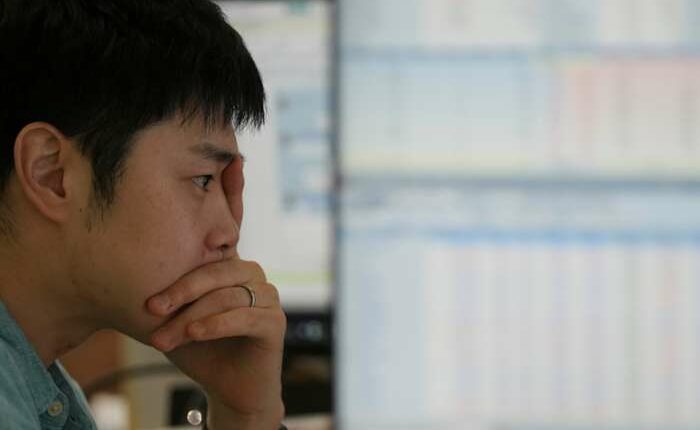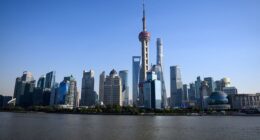Share this @internewscast.com

MANILA – Asian stocks climbed on Friday, following in the footsteps of Wall Street’s record performance the day before. Mixed U.S. economic data fueled optimism that the Federal Reserve might lower interest rates to stimulate the economy.
Japan’s Nikkei 225 hit a new intra-day high, advancing for the third consecutive day with a 0.9% increase to 44,781.09. Semiconductor firm Tokyo Electron, along with Sony Group and Fast Retailing, were key players driving the gains.
In the Chinese markets, Hong Kong’s Hang Seng index surged 1.5% to 26,484.65, buoyed by news that Beijing may instruct state banks to assist with unpaid local government bills. Meanwhile, the Shanghai Composite index edged up 0.2% to 3,877.38.
In South Korea, the Kospi rose 1.3% to 3,387.02, while Australia’s S&P/ASX 200 gained 0.7% at 8,867.90. Over in India, the BSE Sensex climbed by 0.3%, and Taiwan’s Taiex improved 0.6%.
Stephen Innes of SPI Asset Management commented in a market analysis, “What’s driving the markets now is more than just a rally — it’s the clear shift signaling a dovish Federal Reserve. This shift doesn’t occur in isolation but ripples globally, lifting nearly every market in every port.”
Wall Street enjoyed another day of record highs on Thursday. Stocks rose after a mix of U.S. economic data kept the window open for the Federal Reserve to potentially cut interest rates to further support the economy.
The S&P 500 rose 0.8% and set an all-time high for the third straight day. The Dow Jones Industrial Average rallied 617 points, or 1.4%, and the Nasdaq composite gained 0.7%. Both also hit records.
Treasury yields eased in the bond market following the economic reports, which were some of the final data releases left that could sway the Federal Reserve’s thinking before its meeting next week. The unanimous expectation on Wall Street is that it will cut its main interest rate for the first time this year.
The hope on Wall Street has been for a slowdown, but a precisely measured one. The job market has to be weak enough to get the Fed to cut interest rates, which can give a kickstart to the economy and to prices for investments, but not so much that it causes a recession.
The Fed has been hesitant to cut interest rates throughout 2025 because of the threat that President Donald Trump’s tariffs could make inflation worse. Lower interest rates can push inflation even higher.
A report on inflation Thursday showed that prices are continuing to rise faster for U.S. households than the Fed’s 2% target, but no more than economists expected. Consumers paid prices for food, gasoline and other costs of living that were 2.9% higher in August than a year earlier, a slight acceleration from July’s 2.7% inflation rate.
Traders believe the Fed will see the slowing job market as the bigger problem than inflation.
Stocks of companies that could benefit from lower interest rates rallied on Wall Street, including owners of real estate and homebuilders.
In other dealings on Friday, benchmark U.S. crude shed 53 cents to $61.84 per barrel. Brent crude, the international standard, slipped 51 cents to $65.86 per barrel.
The U.S. dollar rose to 147.51 yen from 147.15 yen. The euro slid to $1.1729 from $1.1740.
___
AP Business Writer Stan Choe contributed.
Copyright 2025 The Associated Press. All rights reserved. This material may not be published, broadcast, rewritten or redistributed without permission.













